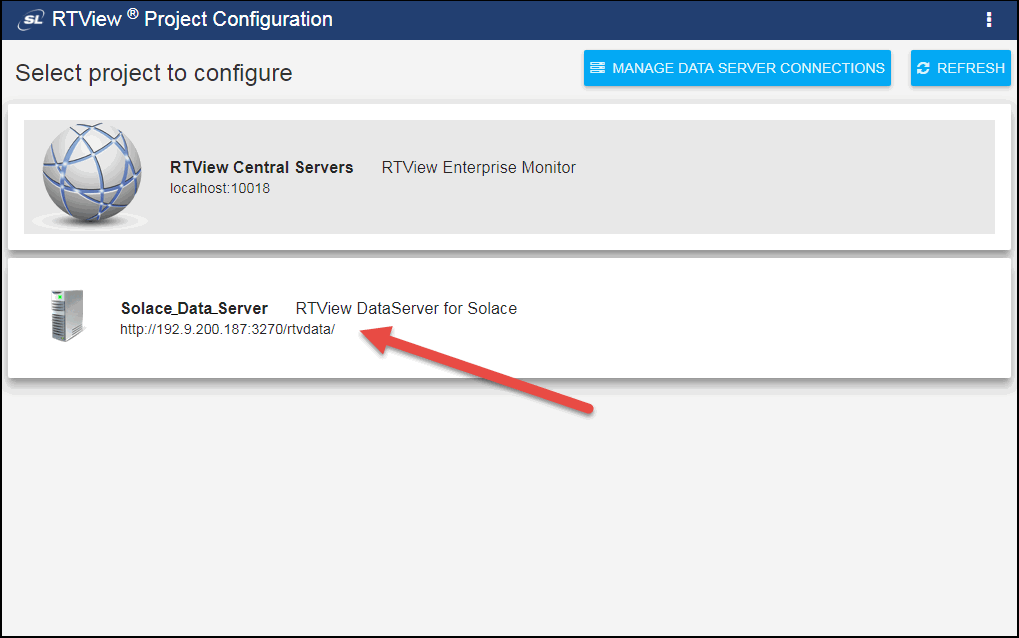RTView DataCollector for Solace Quick Start Guide, Version 5.1.1 (On-Premise)
The RTView DataCollector for Solace collects Solution Package data via connections that you define in the RTView Configuration Application and sends the collected data to the RTView DataServer for Solace, which collects this data and any additional data that the RTView DataServer for Solace is collecting. This collected data is then pulled into Enterprise Monitor via an RTView Data Server connection created in the RTView Configuration Application. Note that the RTView Data Collector does not generate alerts or store history data.
This document describes how to download and install the RTView DataCollector for Solace for use with RTView DataServer for Solace and Enterprise Monitor, how to configure the data collector including defining the connection information for the Solution Package for Solace, how to connect to the RTView DataServer for Solace, and how to verify that your setup is working properly in the RTView DataServer for Solace. This document assumes that you have already downloaded and installed the RTView DataServer for Solace. See RTView DataServer for Solace Quick Start Guide for more information.
Note: If you are interested in setting up High Availability (failover) for your DataCollector, review Configuring High Availability for DataCollector Deliverables prior to starting this flow.
Note: In addition to using the RTView Configuration Application for configuring your connections, you can use the Property Editor REST API to import initial connections or automate connection updates. See Property Editor REST API for more information.
Before You Get Started
- You must have Java installed and you should know the installation directory path.
- You should know the correct full path to the directory containing the jar files for each of your solution packages.
- You should know the connection settings for your solution packages:
Solace connections: For message routers, know the SEMP Version of the message router(s), URL, and VPN (if defined). For Syslog connections, know the protocol, host, and port.
Solace Cloud Event Brokers: You need to provide the exact SEMP version on each Solace Cloud Broker. Use the Solace Cloud console to get the value for the Solace Broker Version field, under Stats. The broker version aligns with the SEMP v1 version. You will use the first three digits, including any decimal points, of the value shown in the Solace Cloud Event Broker Solace Broker Version field, concatenated with this string: VMR. For example, if the value for the Solace Broker Version field is 9.1.1.1.0, you enter: 9.1.1VMR
- If you are upgrading to a new version of the DataCollector, review the General Upgrade Steps document to see if there are any additional steps required. You should also review the upgrade steps for the Solution Package for Solace.
Downloading the RTView DataCollector for Solace
Open a browser and navigate to https://sl.flexnetoperations.com.
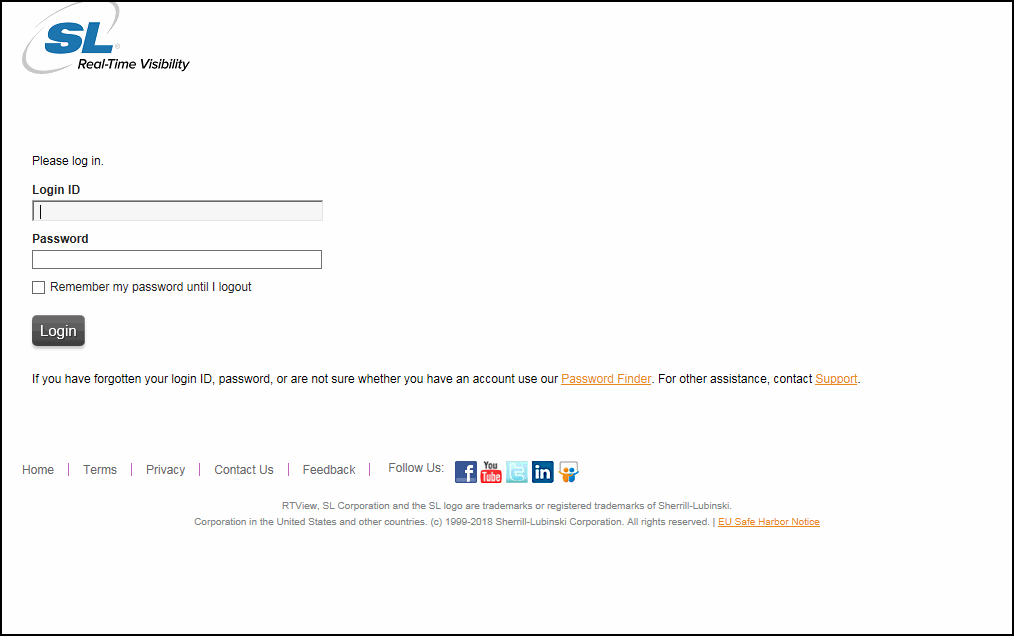
- Login using your RTView Download Center account login/password.
If you do not have an RTView Download Center account, contact sl@flexnetoperations.com about helping you to create an account.
The RTView Download Center page displays.
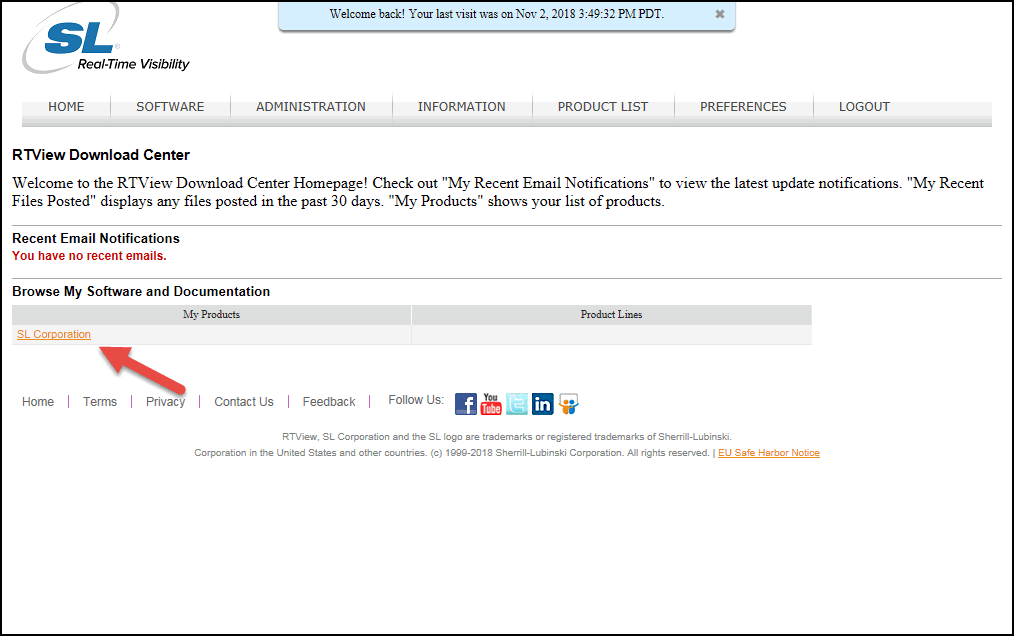
- Click the SL Corporation link in the Browse My Software and Documentation region.
The RTView Download Center displays.
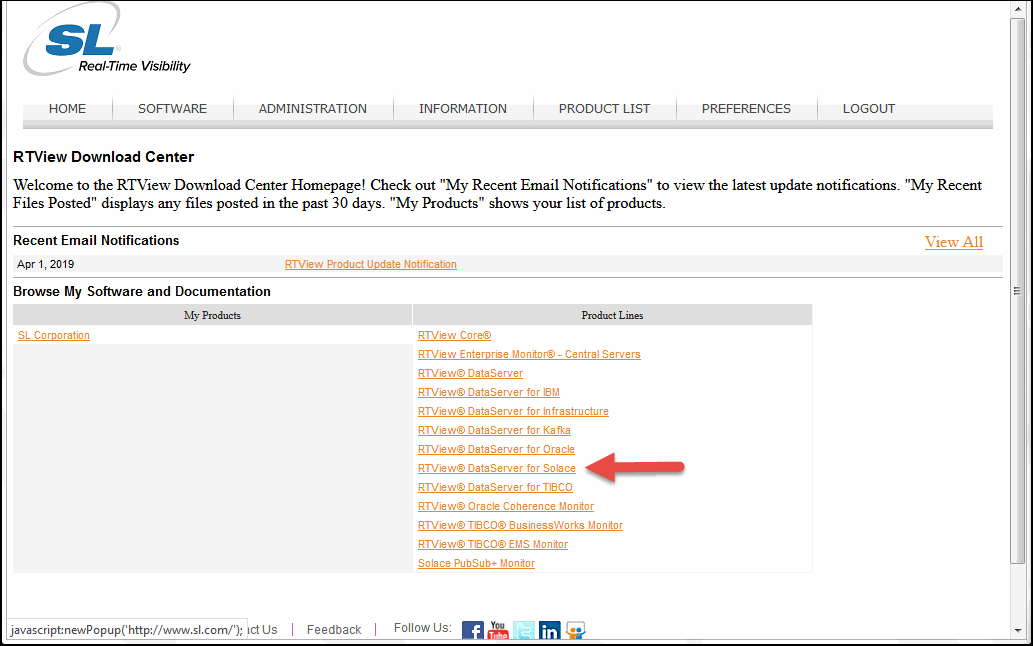
Click the RTView DataServer for Solace link.
The Product Information page displays.
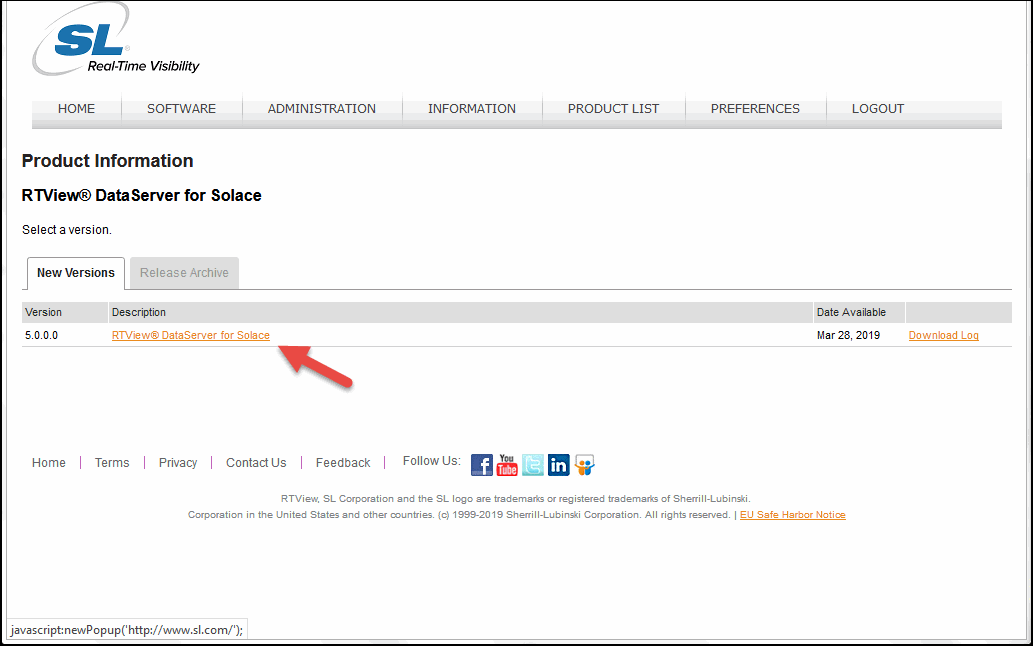
- Click the RTView DataServer for Solace link.
The Product Download page displays.
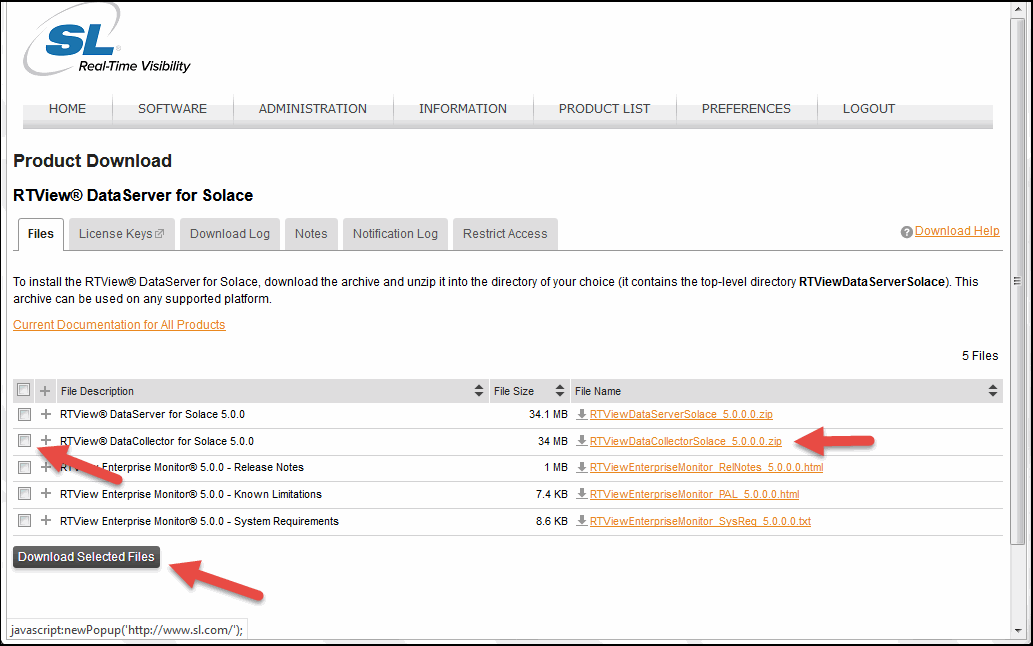
Click the RTViewDataServerCollector_<version>.zip file or, if you want to download multiple files, select the check box next to the different deliverables and click the Download Selected Files button.
The compressed file(s) is/are saved to your machine.
Registration
When you install the DataCollector, a temporary license key is included. SL Corporation will send you a permanent key that you will need to add to your RTView license key file so that you can extend the operation of your monitoring system.
This is a universal key that will enable you to run RTView on different machines and platforms. It is your responsibility to ensure you use RTView within the terms of your End User License Agreement (EULA).
To update your RTView system with your new license key, open a command window and:
- Navigate to RTViewDataCollectorSolace/rtvapm/rtview/lib.
- Edit the KEYS file using a text editor.
- Copy/paste the new replacement key to the file.
- Save the KEYS file.
Installing and Starting the RTView DataCollector for Solace
Note: If using UNIX, do not include spaces in your installation directory path. The start_server.sh and stop_server.sh scripts will not function properly if spaces are included in the installation directory path.
Extract All (Windows)/unzip (UNIX/Linux) the file to the directory of your choice. For UNIX/Linux, use unzip -a to unzip the file.
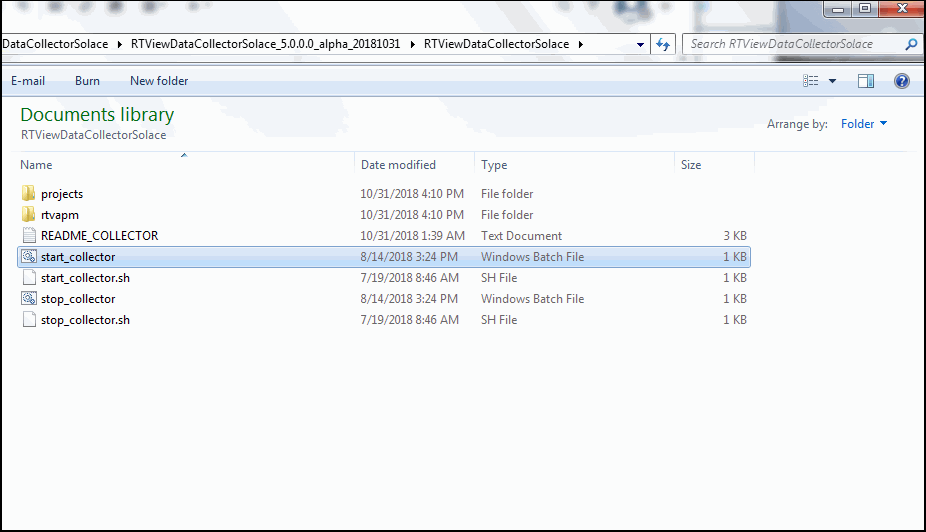
Open a command window and set the JAVA_HOME environment variable to point to your Java Installation. For example:
export JAVA_HOME=/opt/Java/jdk1.7.0 (UNIX/Linux)
set JAVA_HOME=C:\Program Files (x86)\Java\jre1.8.0_201 (Windows)
Or, in Windows, you can set JAVA_HOME as an environment variable (in Control Panel > System > Advanced system settings), where it will then be used by all command windows and when you double-click on a .bat file.
- In the command window, navigate to the RTViewDataCollectorSolace directory and type:
start_collector.bat (Windows)
./start_collector.sh (UNIX/Linux)
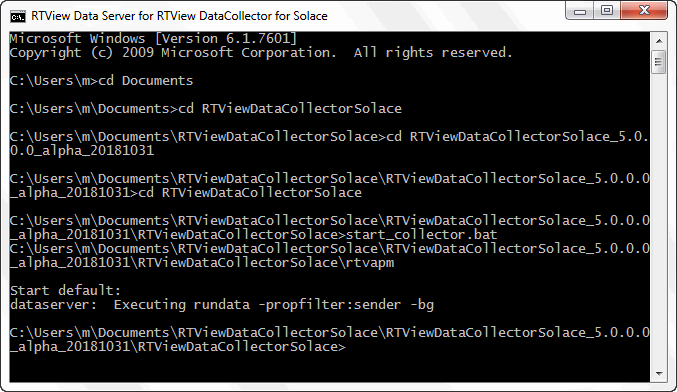
Or, in Windows, you can double-click on the start_collector.bat file in the RTViewDataCollectorSolace directory.
Note: This script starts the Data Server on port 3278 with HTML Server (Eclipse Jetty, by default) on port 3270. If these ports conflict with other processes running on your system, you can change the first two digits of the ports by using -portprefix: and specifying the first two digits you want to use for the ports in the command line. For example: start_collector.bat -portprefix:44 (which would change the ports to 4478 for the Data Server and 4470 for HTML Server). If you want to save your port prefix, you can change the port prefix in the RTView Configuration Application (see the next section), or you can use -saveportprefix: command line argument (for example: start_collector.bat -portprefix:44 -saveportprefix).
Configuring the Data Collector
Next, you need to create your connections for the solution package using the RTView Configuration Application.
- Open a browser and type:
http(s)://localhost:3270/rtvadmin (for a local installation using Eclipse Jetty)
http(s)://<IP address>:3270/rtvadmin (for a remote installation using Eclipse Jetty)
Note: If you specified a different port at startup (due to a port conflict), you must use the port you specified in the command line. For example, if you specified 44 as your port prefix in the command line at startup, then you would use:
http(s)://<IP address>:4470/rtvadmin
The Authentication required dialog displays.

- Log in using rtvadmin/rtvadmin as the username/password.
The RTView Configuration Application displays.
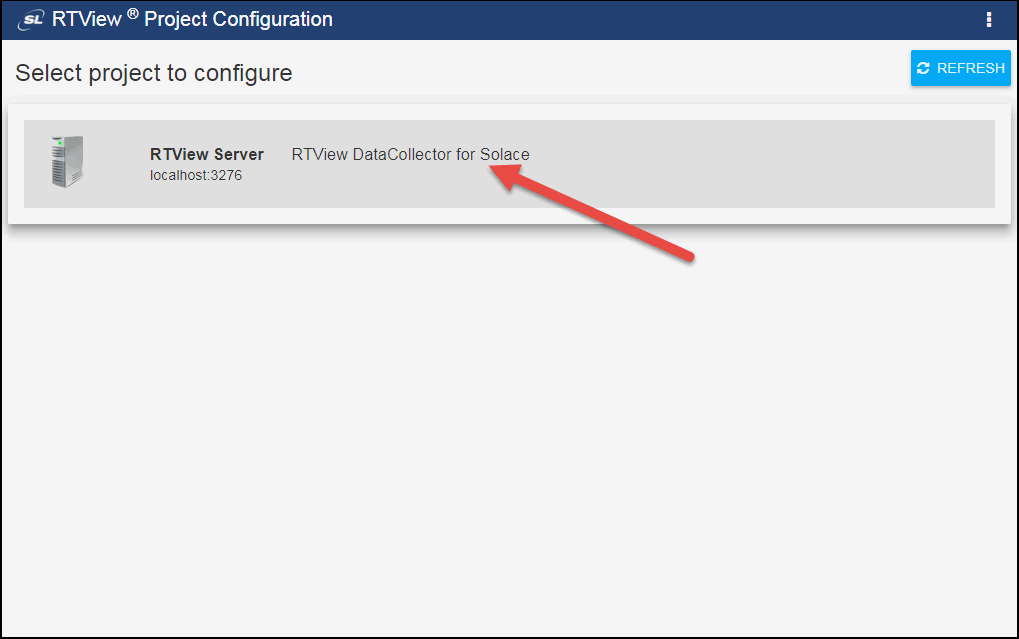
- Click RTView DataCollector for Solace.
The RTView Configuration Application displays with the General tab open.
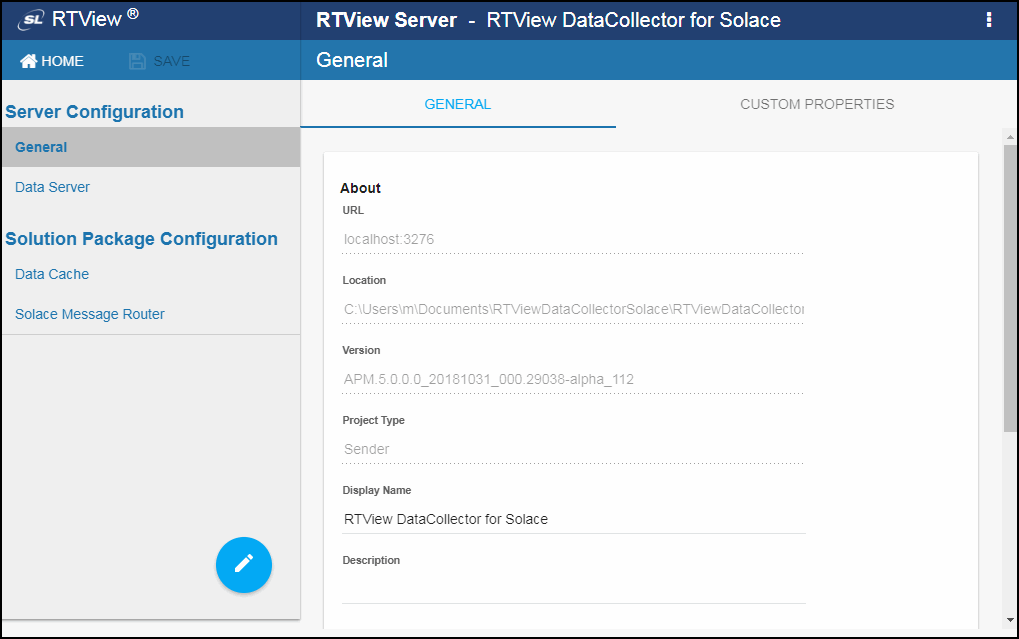
- As previously mentioned, if you modified the port at startup, you should modify the port prefix so that you do not need to specify the port on the command line every time you run the startup script. To do so, navigate to Server Configuration > General > General Tab > Ports > Port Prefix and define a new port prefix. If you change the Port Prefix to 44 then, after saving your changes and restarting your data server, you would access the RTView Configuration Application for the RTView DataCollector for Solace using the following URL: http(s)://localhost:4470/rtvadmin (instead of the default http(s)://localhost:3270/rtvadmin URL)
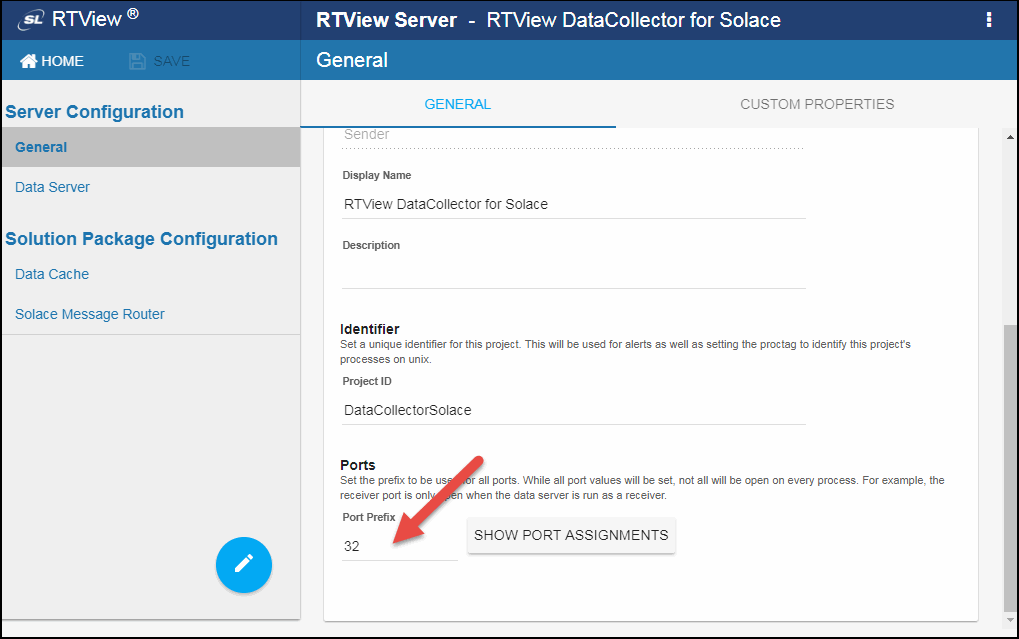
- Under Solution Package Configuration, select the desired solution package you want to configure and click the link below to view the steps required to set up the configuration for the solution package:
Data Cache: No configuration changes required
Connecting to the RTView DataServer for Solace
Next, you need to connect the RTView DataCollector for Solace to the RTView DataServer for Solace. To connect the two servers:
- Navigate to Server Configuration > Data Server > Collector tab.
The Collector tab displays with a default target1 already created. This target is configured to send all solution package data to localhost:3272, which only works if your data collector and data server are on the same machine. If your data server is on a different machine, you will need to edit this target.
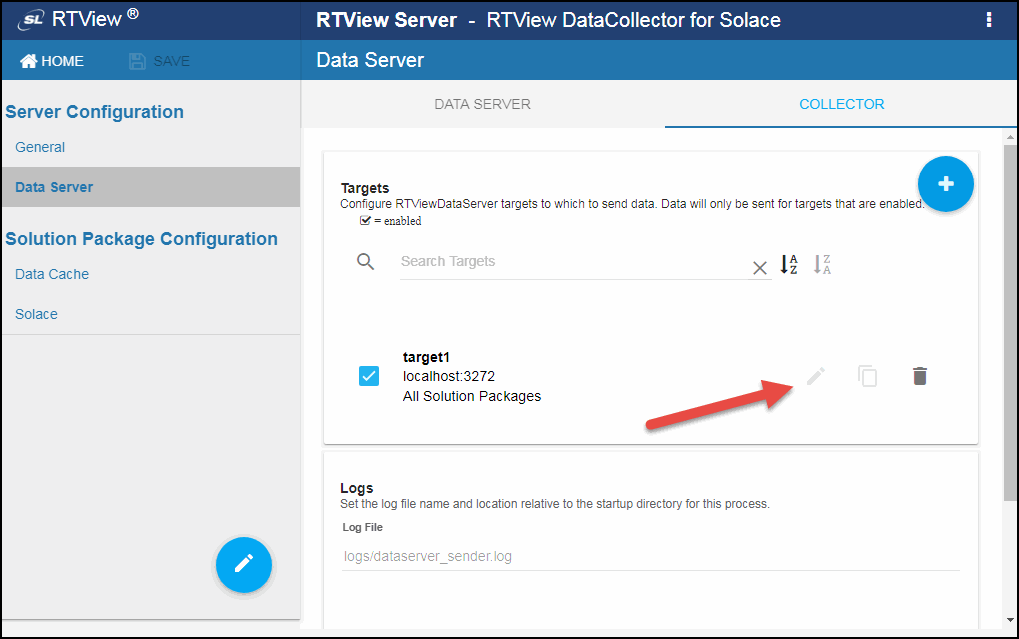
- To edit the existing target, click the "pencil" icon associated with the target.
The Edit Target window displays.
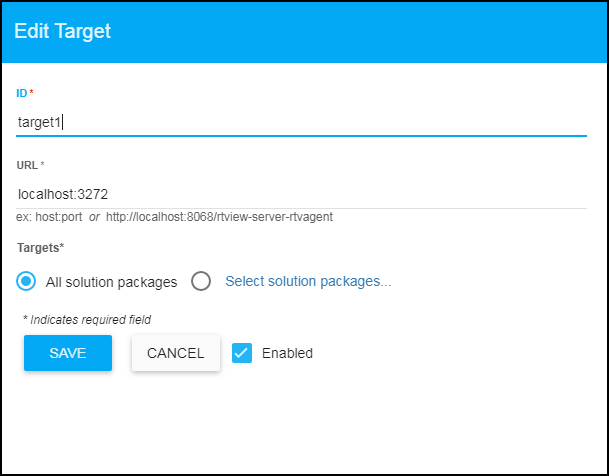
- Define the target server information and click SAVE where:
ID: The name you want to give to the target server.
URL: The complete URL for the target server connection.
Targets: Select one of the options:
All solution packages: (default) Sends all solution package data to the target (receiver) data server.
Select solution packages: Opens the Solution Packages dialog that allows you to select the solution packages for which you want data sent to the target (receiver) data server.
Enabled: Enables/disables the target connection.
Saving Your Changes and Restarting the Data Collector
- Once you have created all of your connections, click the SAVE button in the RTView Configuration Application.

- For your changes to go into effect, you must stop and restart the data server by either:
- clicking the
 button (in the upper right-hand corner of the window)...
button (in the upper right-hand corner of the window)...
- clicking the
- or by typing the following in your installation directory in the command window:
stop_collector.bat (Windows)
./stop_collector.sh (UNIX/Linux)
start_collector.bat (Windows)
./start_collector.sh (UNIX/Linux)
Verifying Your Setup
To verify your setup:
- First, you should verify that your collector is collecting data in your caches by opening a browser and accessing the following URL:
http(s)://<IP address>:<port>/common
For our example, we changed the port to have a prefix using 44 and we have a local installation, so our URL is:
http://localhost:4470/common
The RTView Cache Viewer application displays, which allows you to view the details for the caches that are collecting data.
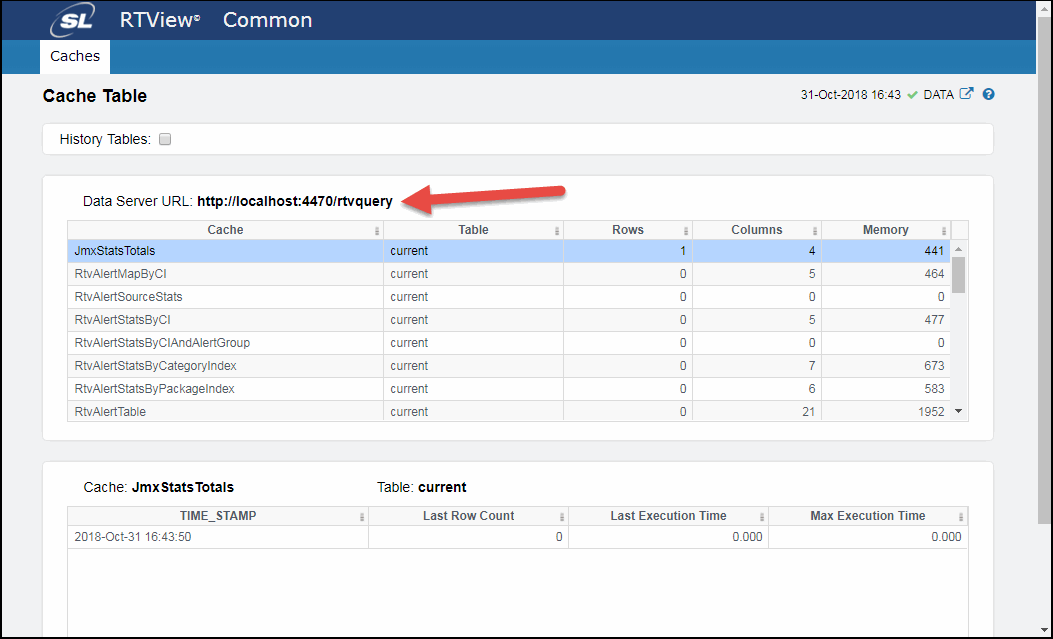
- Next, after you have started and configured your RTView DataServer for Solace, open a browser and access the following URL:
http(s)://<IP address>:<port>/common
For our example, we used the default port prefix and we have a local installation, so our URL is:
http://localhost:3270/common
The RTView Cache Viewer application displays, which allows you to view the details for the caches that are collecting data.
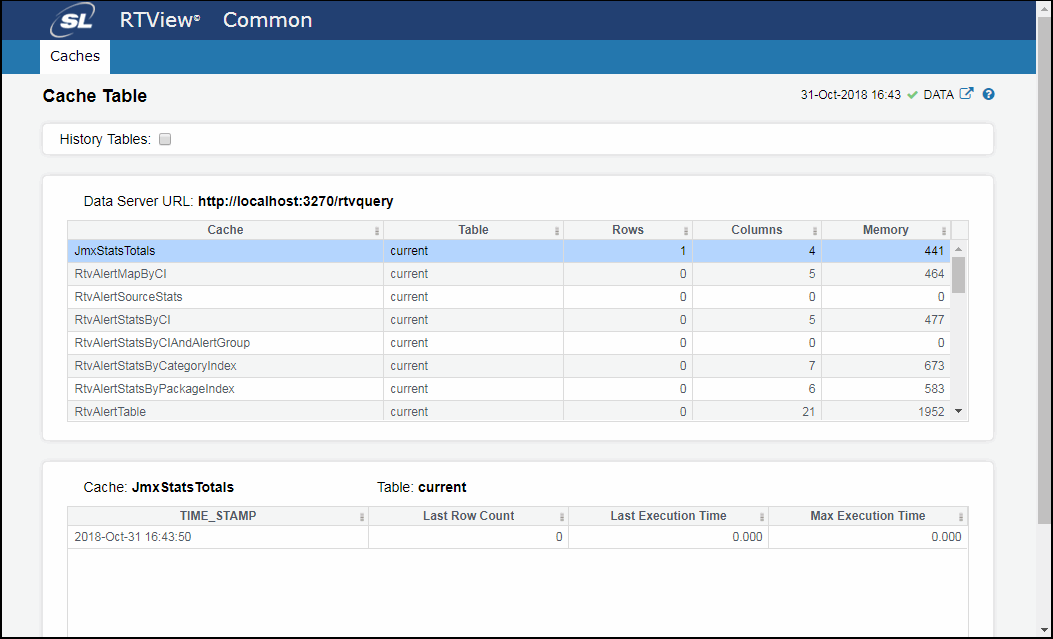
- Once you have completed the required setup in the RTView DataServer for Solace and within RTView Central Servers (Enterprise Monitor), you can open a browser, access the RTView Configuration Application for RTView Central Servers using http://localhost:10070/rtvadmin, and log in using rtvadmin/rtvadmin as the username/password. See RTView DataServer for Solace Quick Start Guide for more information on setting up the RTView DataServer for Solace and RTView Central Servers.
Your data server (Solace_Data_Server, for our example) displays in the list below RTView Central Servers. You can edit your data server connections/configurations in the RTView Configuration Application for RTView Central (http://localhost:10070/rtvadmin) or in the RTView Configuration Application for the RTView DataServer for Solace deliverable (http://localhost:3270/rtvadmin).
